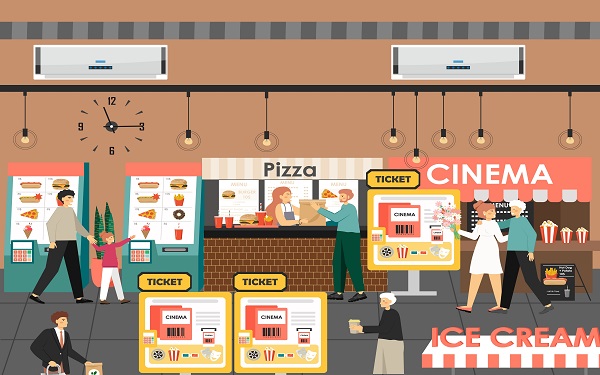Handing your ticket to an usher as you walk from the foyer into the auditorium has been a quintessential part of the cinema-going experience for as long as there have been cinemas.
Along with popcorn and pre-feature trailers, it might even be hard for some people to imagine going to the cinema without going through the ritual of getting your ticket stamped or punched.
From the cinema operators’ perspective, having a member of staff – and for the busiest screenings – stationed at the door of the theatre to check everyone has a ticket for that showing is problematic.
From the perspective of making sure everyone has paid and not running out of seats due to people sneaking in, it is a necessary task. Particularly during these recent times whereby social distancing measures are in force meaning seating has been restricted in the auditoriums. However, it also means diverting staff away from more valuable tasks – such as working the bar or concessions to generate additional revenue, for example, or providing a more hands-on form of customer service than just checking people have the right ticket.
It is something operators have always put up with because there hasn’t previously been a viable alternative. But that is no longer the case.
Digital entry
Over the past two or three years, cinemas have been migrating at pace towards paperless ticketing. With more and more cinema goers pre-booking tickets online, operators have started to take advantage of mass smartphone ownership to replace paper tickets with digital versions. Using QR codes or web links sent via SMS, email or mobile app push notifications, companies find digital tickets represent a more cost-effective and eco-friendly solution.
They also offer much more flexibility, both in terms of how, when and where customers buy a ticket and receive it, and also for managing entry. With digital ticketing, it becomes straightforward to automate the role of the usher.
Usher point kiosks are an emerging solution for cinema operators. The concept is simple – instead of handing over a ticket to a person to gain entry to an auditorium, customers scan the code sent to their smartphone. At AURES, we have a several self-service kiosks that can be mounted on the wall or on a pedestal at the doorway and which is fitted with a Bluetooth scanner. As customers pass through, they present their tickets and the scanner registers the QR code.
An obvious question this raises is – what is stopping people just walking through without a ticket? In other sectors that have already adopted automated entry systems at scale – sports stadia, for example – turnstiles or other forms of barrier are connected to the scanner system, so a customer can only gain entry if their ticket scans correctly. However, cinema operators are likely to find this option too expensive and impractical. As cinema screens usually only have one way in, the potential for a barrier system to cause long queues would be high.
An alternative solution would be to pair the scanner system with a camera. Using the right kind of AI software, the scanner tells the camera how many people should be admitted on each ticket, and the camera then counts them in. Any discrepancies and an alert could be sent to staff to come and resolve the issue, again this is crucial during the current climate in order to get social distancing measures right due to restricted seating.
The main benefit is that if this method helps to reduce the number of staff required and therefore limiting the number of people required for this process. Which ensures both staff and customers are kept safe during these extraordinary times where social distancing needs to be maintained.




